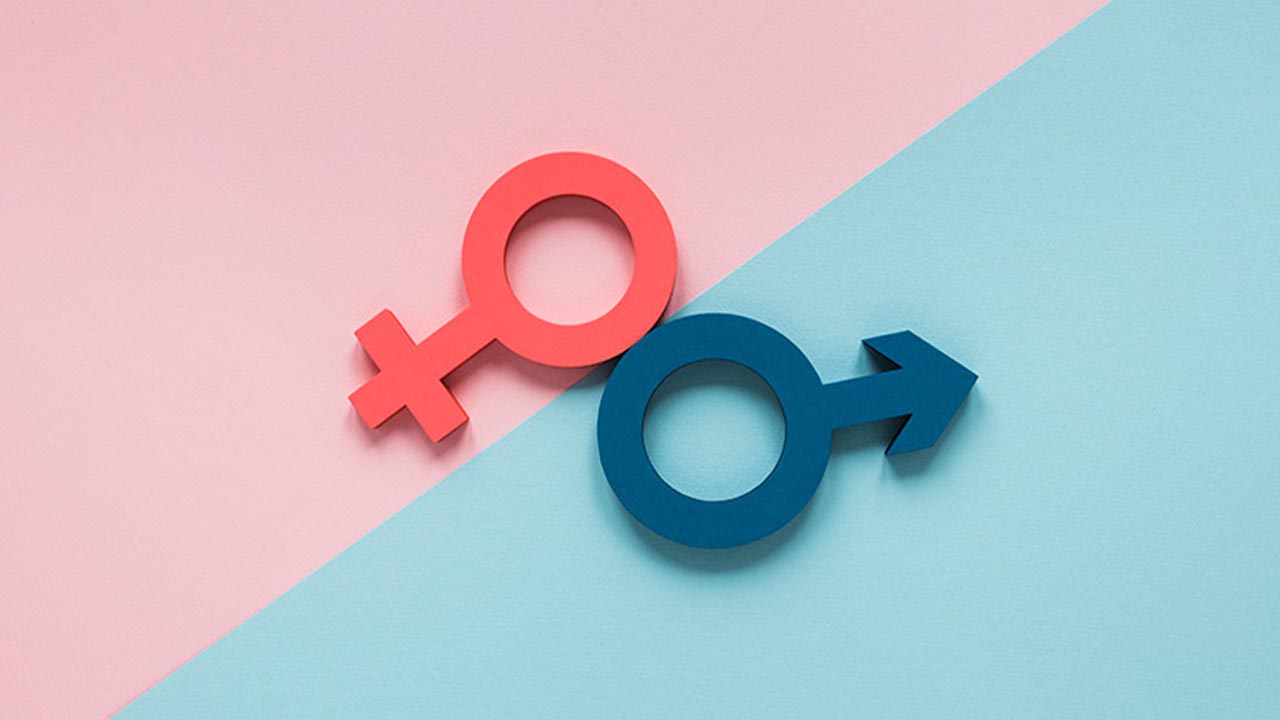In this research paper, the need to meet specific goals of the UN sustainability goals are discussed namely gender equality and economic development. We explore the various dimensions of gender inequality and the background of these factors are explored to fully grasp the complexities and depths of the social biases that women face. The current gender ratio imbalance can be constituted by multiple factors. Women face numerous challenges in the face of constricting social norms, sexual harassment and systematic discrimination. This is constituted of deep-rooted misogyny and patriarchal norms.
These could be addressed simultaneously, by encouraging women to take an active part in our workforce in order to economically empower them. As a result, this will positively influence the issues women face and economically benefit society as a whole. A plethora of economic advantages would be triggered, including an increase in employment, GDP per capita and domestic production.
Introduction
The 2030 Agenda for Sustainable Development was officially adopted by 193 countries in 2015, setting out numerous goals, which encourage gender equality. Goal Four: Quality education covers the need to target female education and goal eight: decent work and economic growth promote the creation of equalitarian labour markets for women. Besides the references, they directly target gender equality through goal five. The United Nations has clearly directed a global effort to bridge the gap between the genders. As this topic is being raised across academic, economic and political platforms, a critical link between female participation in global and economic development has been established throughout various studies. It has been proven to be a significant driver for growth and development, particularly for developing countries.
Economic empowerment of women would enhance productivity, increase economic diversification, and address the income equality that demotivates numerous females. UN Women reports that by increasing female employment rates in OECD (Organization for Economic Co-operation and Development) countries the GDP (Gross Domestic Product) could be boosted by over six billion dollars (Facts and Figures: Economic Empowerment, n.d.).
A huge contributor to the lack of participation of females in the economy is the absence of a safe environment, from the workspaces themselves to the transport available. The abundance of harassment cases combined while taboos connected to women undoubtedly limits their ability to commute to and from work. Moreover, the social hold over women’s sexuality, their economic dependence on men, and restrictions on their mobility results in numerous disadvantages. Having an economic contribution is often interdependent on an individual’s decision-making power in the household.
This imbalanced power dynamic translates to early marriages, excessive childbearing, and a lack of control over their own bodies, and consequential rates of illiteracy adversely affecting female health but acts as a great socio-economic cost to the society. It has been noted that in low-income households with scarce means, gender discrimination in the allocation of household resources is more pronounced. Women have a higher tendency of being subjected to nutritional deprivation in poor households. This further contributes to the pressures women already face in our society, including poverty and cultural discrimination. Two-thirds of the psychiatric patients at any hospital or clinic are supposedly women, resulting in detrimental repercussions on their productivity, ultimately costing the society through its negative economic implications (Bari & S.Pal, 2000). As a result, a loop is created with such bias obstructing economic female empowerment, with their male counterparts than in return exploit this financial dependence to oppress women and children.
This systematic discrimination is not just limited to the social development of women but is embedded deep in our economic institutions, systems and even judiciary. Most economic structures are built in a way to segregate by gender, pushing women towards lower-paying jobs, unpaid family workers or the informal sector. The incompetency of providing affordable or state-run healthcare and childcare services, combined with the societal pressure on women to be the primary parent responsible for the child bounds to the women to un-paid household services or part-time jobs.
Lacklustre policies regarding harassment and female protection with weak implementation marred with the palpable prejudice in selecting male employees are methods to discourage female participation in the workforce. Such confines are exploited by employers who then pressure down the wages and hours of working women. As of 2018, the gender pay gap remains disproportionately high at an alarming 20% meaning that for every dollar a man earns a woman earns eighty cents (Global Wage report, 2018).
Women’s economic empowerment has become essential to aid in recognizing women’s rights and gender equality. This empowerment consists of the right to have equal opportunities in the labour markets, gain access to resources such as education or training, full control over their lives, time, bodies and be included in decision making at all levels, whether micro-economic or macro-economic.
Data
This research paper has been validated through secondary data by various major sources such as the Asian Development Bank and United Nations Women. The UN has collected a comprehensive set of facts and statistics linking our two variables: gender equality and economic development. In order to better grasp the significance of this topic, the intergovernmental organization has numerically represented the bridges apparent in our society. For instance, it is estimated that women’s unpaid work would be ten to thirty-nine per cent of a country’s GDP (Facts and Figures: Economic Empowerment, n.d.).
The Asian Development Bank probes into the correlation between social development and economic growth, emphasizing how societal norms or gender roles restrict the economy from reaching its full potential. Additionally, to gauge how effective gender equality measures can be from a macro-economic perspective, the European Institute of Gender Equality investigated alternations in demographics if STEM education, pay and labour market activity were changed. An assured econometric model calculated the macroeconomic advantages at the EU level, stating that the employment level at the EU would rise from 0.5 to 0.8 percentage points by 2030 and 2.1 to 3.5 percentage points by 2050. GDP per capita in the EU would rise from 6.1 to 9.6 per cent, which approximately amounts to 1.95 to 3.15 trillion euros (Maceira, 2017).

Official studies from Harvard University and Multidisciplinary Digital Publishing Institute have been thoroughly consulted. Audrey S. Latura and Ana Catalano Weeks of Harvard University examined the determinants of gender imbalance in workplaces with their preceding economic consequences. This study explores the gender equality policies in the workplace, focusing on bridging the gender gap through various remedies, specifically corporate board quotas.
A dataset containing 962 yearly reports from 96 companies that introduced a gender quota as a nationwide policy in Italy and Greece. Attention paid to gender equality in Italy subsequently increased by fifty per cent and some countries which have adopted this tactic comprehensively, such as Norway and France have seen the proportion of women on the boards of publicly listed companies jump up to forty-five per cent (Latura & Weeks, 2021). Moreover, the MDPI’s article ‘Is Gender Inequality a Barrier to Economic Growth? A Panel Data Analysis of Developing Countries’ utilized data from the World Bank Development Indicators and observed a panel of one hundred and five developing countries, discovering a startling association between women participation in parliaments and the growth of developing countries (Altuzarra, Gálvez-Gálvez, & González-Flores, 2021). Barriers halting women from maximum political presence is seen to be a huge deterrent in economic evolution.
Methods & Results
As a study dependent on qualitative and quantitative secondary data, the main objective is to analyze already present material to form a conclusive hypothesis on the existence and extent of economic benefits that gender equality might have. Multiple causes for the lack of female participation in the labour force have been identified that contribute to gender inequality and as a result, this untapped potential acts as a high cost to the economy. Here, I will focus on the three most apparent, repetitive and pertinent roots of this gap discussed in the sources that were referred to: education, discrimination/harassment and social norms.
Globally, a hundred and twenty-nine million girls are not in school, including thirty-two million of primary school age, thirty million of lower-secondary school age, and sixty-seven million of upper-secondary school age (Girls’ education, n.d.). Moreover, only forty-nine per cent of countries have achieved gender parity in primary school and forty-two per cent in secondary school (Girls’ education, n.d.).
Poverty accompanied by discrimination and a social norm of labelling men as the ‘breadwinners’ of the family lead to the preference of male children being sent to school. Some schools also lack the facilities to meet the safety and hygienic needs of girls while in the majority the teaching practices, as well as the atmosphere, is neither gender-neutral nor conducive for female students, creating gender gaps in the development of students. This prevents women from earning high incomes, reducing the GDP per capita and limits the potential spending that multiplies to boost local business and the country’s macroeconomy.
Education causes a ripple effect, giving women more decision making power and control over their future to escape adverse practices such as early or forceful marriages and female genital mutilation. Such gender balance is also beneficial to men, reducing the pressure of being the sole earner, improving their mental health, suicide rates and violent tendencies.
Sexual harassment especially in workplaces can have long-term economic repercussions on the victims and the economy itself. 36.6 % of women aged twenty-five to thirty-four report being harassed in their workplaces (Gurchiek, 2019). Harassment is a contributor not just to the pay gap that discourages women from taking part in the labour force but disrupts career advancement from women. Female employees may resort to reducing their hours, skip training necessary to their skill development and shift to lower-paying jobs in order to gain a sense of security. Companies may lose out on talented personnel that would have enhanced their organization and once again, restricts national employment levels.
In addition, social norms obstruct women’s ability to enter the labour force, access to diverse opportunities and physical mobility. Regressive social norms that define narrow roles of women by labelling her as only a wife or a mother, restraining them to unpaid care work and deeming it inappropriate for women to actively prioritize their own career. These regulations are highly prevalent in South Asia and developing countries, due to the norms that are inclined towards child labour and child marriages (Social norms and women’s economic empowerment ).
These are often associated with a larger availability of lower scaled work opportunities and lower education rates, which have negative implications for the economy. Restricting women to certain fields or certain jobs such as stitching or cooking prevents the growth of other industries on account of the limited resources and underrepresents women in the related associations. For instance, politics is deemed to be inappropriate for women leading to a male-dominated government and parliament. Consequently, the policies that are introduced often prove to be biased, exclusive and ignorant.
Discussion
The focal points of this paper are the vitality of women’s participation to our global economy and the benefits reaped from a more equal society. Countries working on gender equality see positive changes in their statistics, with the GDP increasing from four per cent to ten per cent and on average, and an overall twelve per cent rise is expected by 2050 (Maceira, 2017).
With an increase in women in the labour market and in the fields with skill or worker shortages with decent prospects of future employment, a country’s unutilized potential could be reached through introducing and expanding new industries, making substantial contributions to the economy. A more sustainable growth more be witnessed as equalitarian measures would boost the productive capacity, lowering the prices which would not only promote the domestic production of goods and services but make them internationally competitive. Employment, spending and wages would surge in the country.
Currently, women would be less likely to pursue entrepreneurship due to their disadvantages in starting a business. Women’s entrepreneurial activity is often half or less than half in forty per cent of our economies (Facts and Figures: Economic Empowerment, n.d.). Thus, enacting gender equality measures through fair wages, promotion of girls’ education, provision of better transport and more inclusive policies etc would allow the society to benefit from the maximum economic potential of women.
If introduced and imposed correctly, women would have better social protection, maternity protection and a more balanced ratio of shared unpaid work between men and women, helping increase the fertility rates. In the long run, this would increase the population and ultimately expand the labour supply market. Such a development could cause an increase in the number of employed citizens by 1.3 to 2.6 million in the European Union (Maceira, 2017).
Conclusion
The existing inequalities that we face distinctly undermine and plague women, societies and the entire globe, leaving a copious amount of talent underutilized. However, an unmistakable pattern is identified in which countries that are close to attaining gender egalitarianism are seen to be the best performing economies. It is safe to state that there are unarguably major economic benefits to be obtained from a society that promotes gender equality. While there may be variance on how to achieve an equal opportunity state, a consensus has been reached to the fact that it is necessary for sustained growth of the global and individual economies. Henceforth, we can conclude there is an explicit link between gender equality and economic prosperity, amplifying the significance of implementing gender equality measures.
References
- Altuzarra, A., Gálvez-Gálvez, C., & González-Flores, A. (2021). Is Gender Inequality a Barrier to Economic Growth? A Panel Data Analysis of Developing Countries. Multidisciplinary Digital Publishing Institute.
- Bari, D. F., & S.Pal, M. (2000). Women in Pakitsan . Asian Development Bank; Office of Environment and Social Development.
- Facts and Figures: Economic Empowerment. (n.d.). Retrieved from UN Women: https://www.unwomen.org/en/what-we-do/economic-empowerment/facts-and-figures/
- Girls’ education. (n.d.). Retrieved from UNICEF: https://www.unicef.org/education/girls-education
- Global Wage report. (2018, December 3rd ). Retrieved from International Labour Organization: http://www.oit.org/africa/whats-new/WCMS_653943/lang–en/index.html
- Gurchiek, K. (2019). Report: Sexual Harassment Has Long-Term Economic Impact on Women. Society for Human Resource Management.
- Latura, A. S., & Weeks, A. C. (2021). Corporate Board Quotas and Gender Equality Policies. Harvard University.
- Maceira, H. M. (2017). Economic Benefits of Gender Equality in the EU. Intereconomics, 178-183. (n.d.). Social norms and women’s economic empowerment. International Development Research Centre, Canada.






